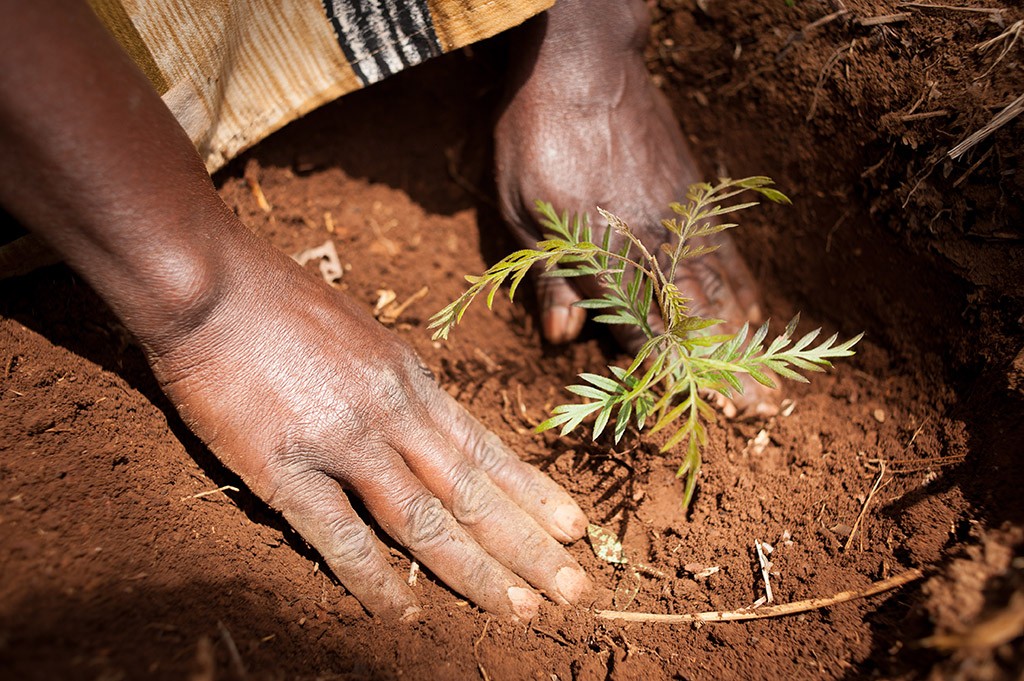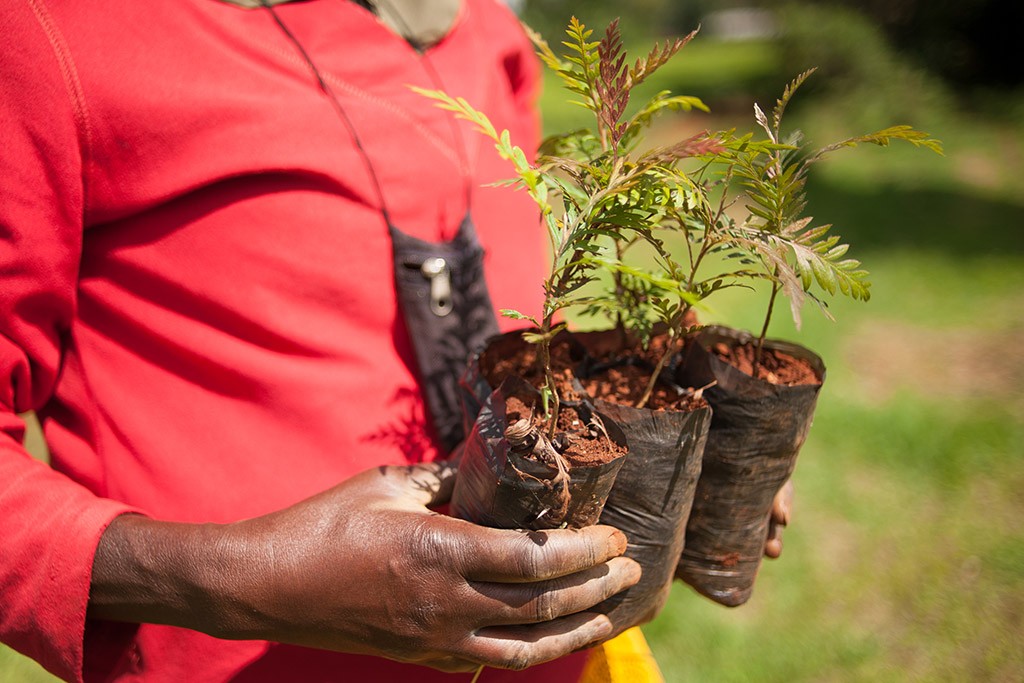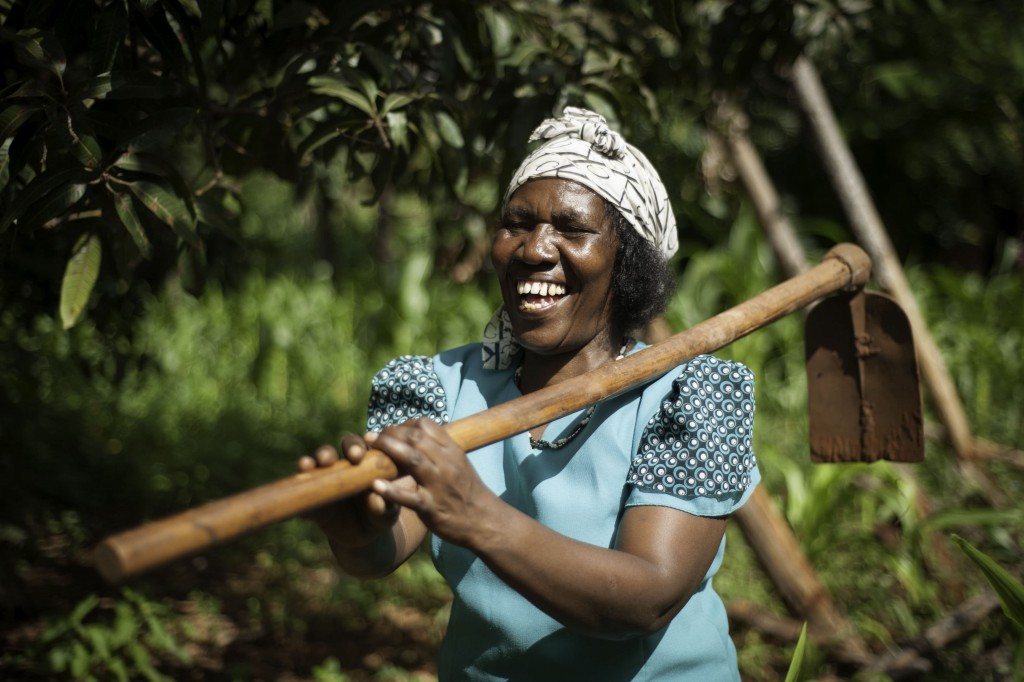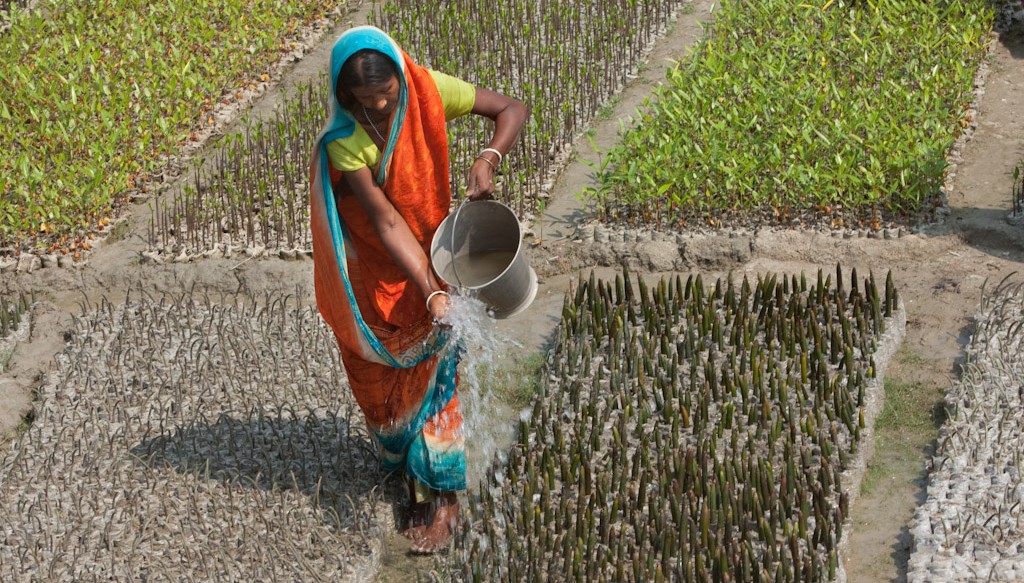The objective of the 21st Conference of the Parties to the United Nations Framework Convention on Climate Change (COP21) in Paris is to reach a universal legally binding agreement to combat climate change with commitments from developed and developing countries to limit greenhouse gas emissions to below 2°C before commitments run out.
Discussions have been focused on reducing carbon emissions with little on “positive carbon” – the gigantic masses of carbon silently stored in natural and agricultural ecosystems, which human activity has the power to destroy or convert to good use. This is unfortunate as soil is part of the solution.
Climate, agriculture and natural resources: Towards a more virtuous cycle ?
Soil at the heart of the carbon, food, and water resources cycle
We often forget that our existence and that of all living organisms depend on a 20-30 cm layer of topsoil from which plants draw their nutrients. This layer owes its fertility to the nature of the bedrock on which the soil has formed, as well as the amount of organic matter it contains. The main component in organic material is carbon (about 58%).
Soil is actually the largest carbon reservoir in the world, with 615 billion tons in the first 20 cm and 2.3 trillion tons in the first 3 meters. Unfortunately, this gigantic carbon stock has decreased considerably throughout the 20th century due to intensive agriculture, deep ploughing and rampant deforestation.
These masses of carbon stored in large land areas are not just vital to combating climate change, but they also provide the basis for our food resources and agricultural raw ingredients in the products we consume. They also account for vital water resources.
Family farming: a response to the challenges facing developing countries
Let’s leave the carbon cycle for a minute and examine the issue from a social point of view. Today, there are 570 million smallholder farms in the world, 72% of which measure less than 1 hectare.
“These farms provide a source of living for 1 billion people, accounting for 40% of jobs and 70% of global food needs.”
Most of these smallholder farms mainly use human or animal power. The energy and techniques used are low in terms of carbon intensity, but the yields tend to be low. Human pressure and the search for new arable land drive deforestation in many parts of the world. Almost everywhere, pastoral or agricultural practices unsuited to the current conditions aggravate the situation.
Worldwide, the equivalent of the surface area of Greece is deforested as a result of agriculture every year because of erosion and soil degradation. This leads to poverty and malnutrition, alongside the destruction of an invaluable natural resource- the reduction of carbon stock stored in these ecosystems.
The interaction between climate change, natural resources consumption, economic development and social stability is directly experienced on a daily basis by rural peoples who depend upon their land for their livelihoods. However, these effects concern us all.
Smallholder farmer populations are rarely talked about -as if they belonged to the past. The growth in cities and urban infrastructure dominates the concerns of today’s policy makers because the world’s population will continue to urbanize. Nevertheless, cities will continue to depend on rural areas for their food, water, and social stability.
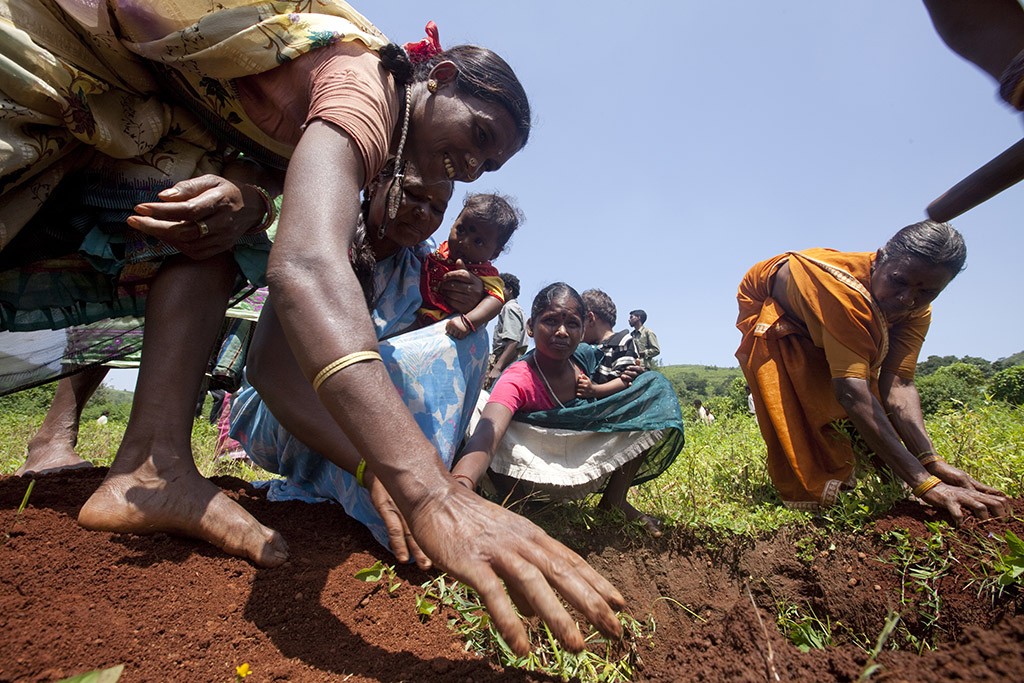
Rural populations are dispersed over wide areas and are often silent, whereas demonstrations that shake the political powers are generally urban. The rural poor are expressing their desperation with their feet. Attracted by the bright lights of cities, they are starting to leave the countryside in mass numbers. Yet, the migration we are currently experiencing is minor compared to what can be expected if the hundreds of millions of rural poor decide to leave the countryside en masse.
Encouraging productive and sustainable agricultural practices
International institutions and many governments are now recognizing that investing in smallholder farming is an economic, ecological, and social priority. New agricultural models are urgently needed that increase production and improve farmers’ livelihoods.
These environmentally sustainable agricultural models do exist and have proved their effectiveness. Low-cost techniques, which are accessible for smallholder farmers have now been successfully tested on a large scale. Knowledge has increased in leaps and bounds in recent years, be it in agroforestry, fertilization practices using biomass, or in plant and livestock breeding. New information technology, financial services directed towards smallholder farms, and the expansion of regional markets are all creating new opportunities for family farms.
Investing in smallholder farmers via innovative financial models
In practice, however, financial investment in smallholder farmers is still limited – despite what official statements may claim. The models that are usually considered modern and efficient are both capital and input intensive. These large farms provide a legal framework and profitability prospects that reassure financial investors, but the overall outcomes are not favourable when extra-financial impacts are taken into account.
In comparison, investing in thousands of smallholder farms would appear to be a complex and uncertain gamble. It is therefore essential to develop investment mechanisms that are both suited to the peculiarities of family farming and are able to support large-scale projects. Unlike “classic” funds, these funds put a financial value on the direct or indirect “externalities”, or benefits, generated by the projects such as: volume and quality of agricultural production, water resources management, increased biodiversity, carbon storage, social impact, etc.
Even more than the investment itself, the method is important: no single stakeholder – be it a company, NGO, farmers’ cooperative or public organization – has the solution on his or her own, but each has a vital role to play in contributing to the solution. Today, coalitions of diverse stakeholders are working together to achieve well-defined goals in the field of family farming. The essential principle driving their models is that the farmers are and will be the main drivers of this transformation.
The companies that process the raw materials from this type of agriculture, which not only guarantee the water supply for cities and industries, but also develop services for farmers, have every interest in making long-term investments to secure their future supplies and contribute to innovation by making their business expertise available.
Governments and development agencies would make better use of public funds if they took an investment and payments-on-results approach to the social and environmental services provided by these projects, and measured them rigorously.
Citizens – which include each and every one of us –are also able to play an essential role by putting pressure on the decision makers, particularly in light of the COP21. The COP21 is a pivotal moment for our society to take real action on climate change. Livelihoods Venture is optimistic that new models and innovations can allow us to come together to collectively find the right solutions for tomorrow.



